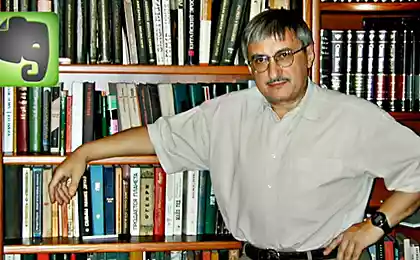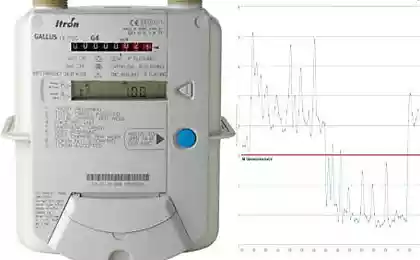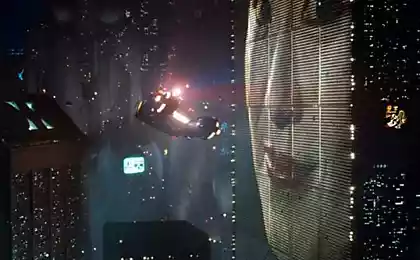2036
Recognition of individual beauty

«Mirror, mirror! Tell
Yes, report back to the whole truth:
I only weapon in the light of all the sweeter,
All ruddy and whiter? » I>
AS. Pushkin
Fairy tales of things gradually implemented in the present reality through the use of new technologies and scientific discoveries. Currently implemented and actively used, such as the Soup Carpet (Aviation), seven-league boots (cars), an apple on a plate (netbook to the Internet), a ball that shows the road (GPS-navigator) and other necessary things. We have tried to implement the mentioned in "The Tale of the Dead Princess and the Seven Knights" system to assess the beauty of a human face by using the methods of artificial intelligence and computer vision (presumably, here the author meant a tablet with a front camera and a custom carrying case).
The question of what makes a face attractive person is the subject of research psychologists, biologists, philosophers, art historians, specialists in plastic surgery for a long time. It is now considered an established fact that people, in addition to individual preferences, and affect biologically-motivated general principles for evaluating health [1-2]. Among the possible candidates for the typical signs of physiologists distinguish symmetrical facial features [3], the contrast image of the face of the average face images of a large set of people [4] corresponding proportions of the face "golden section" [5] and others. For example, in [4], on the one hand, symmetrical features correspond to less prone to mutate genes and therefore people with such features are more resistant to mutations and diseases, and the other - people with more symmetrical features ranked higher beauty assessing their pictures experts. < br /> In recent years, there have been several pioneering papers devoted to computer systems of recognition of beauty through the use of machine vision [6-8] and trained classifiers. These works can be seen as an attempt to empower robotic systems the ability to "see the beautiful." In [6] are used as features facial proportions, with the key points on the face allocated manually. In [7], in addition to the proportions we used the method of principal components for the feature extraction. In [8] to the problem of recognition of beauty we used the deep neural networks .
We have developed an automatic system of evaluation of beauty, working on the basis of allocation of the key points on the face by means of a library of machine vision OpenCV and neyronnoy network , trained targets for these expert assessments and conducted an experimental evaluation of the quality of her work.
Image database for training
We have compiled its own database of images, consisting of 180 individual photos of young women, the images were taken from public sources. They were selected photographs of persons in frontal view with a neutral expression on his face, without glasses and jewelry. To make the sample representative, we have tried to include in the database examples both beautiful and ugly people (Fig. 1).

Fig. 1. Example photos of persons from the base image
In contrast to [7] collected database includes pictures of women of different race, color, and their ages ranged from 18 to 35 years. Once the images have been collected, the group of experts was invited to exhibit the aesthetic appeal of the subjective ratings to each photo on a scale of 1 to 7. Total for labeling photos were raised by 8 experts, 4 men and 4 women aged 16 to 63 years, Grades independently. Under the terms of the experiment, before the grading of each expert were brought all the pictures for the primary reference. To check the consistency of the sample was carried out a correlation analysis, the results are presented in Table. 1.
Table 1. Pairwise correlations estimates of various experts
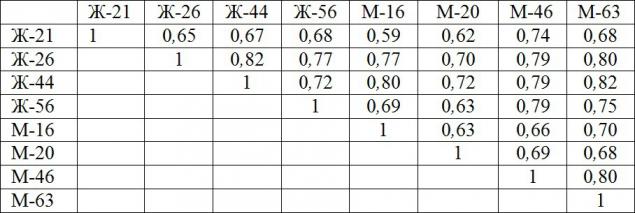
The average correlation of the sample was at 0, 7, which enables learning neural network on such data, and roughly corresponds to the results of other researchers [4, 7].
The general scheme of the algorithm
Beauty recognition system takes an image containing a frontal picture of a human face (Fig. 2).

Fig. 2. Scheme of the recognition algorithm beauty persons
Before the start of the algorithm, we assume that the person in the image has already been allocated previously and occupies most of the image area. Next, using a standard bustingovogo classifier Viola-Jones , a member of the library resources of computer vision OpenCV, highlights areas on the face, the respective rights and left eye, nose and mouth.
On the basis of these coordinates are calculated basic facial proportions, which are then used as a feature vector for the neural network. A neural network is first trained on these input data using expert evaluations as a target sample, and then can be used to recognize in the new, not previously seen data network.
Feature extraction
We divided our signs allocated into two groups: the ratio of the distance between selected key points and the ratio of the size of the person found.
The group features is shown in Figure 1. 3, left: AB / CD, AC / BC, AD / BD, EC / ED, EC / AB, AC / AD, BC / BD. Group signs 2 is shown in Fig. 3, Right: L / R, Mw / Mh, Nw / Nh, Mw / Nw, Mh / Nh. The final feature vector consists of the combined features of both groups. Before serving a neural network data were given to the range of [1, 1].
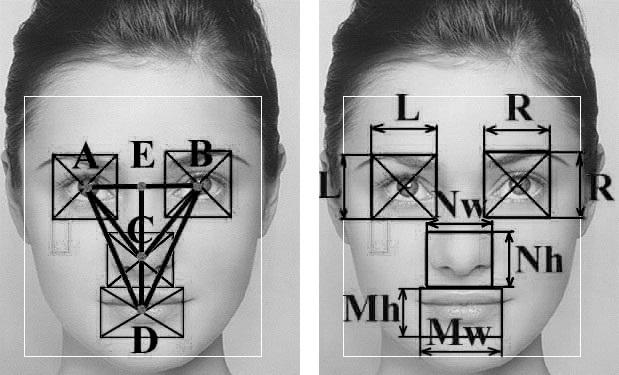
Fig. 3. Calculation of feature vectors for the selected key points on the face
Training neural networks
As a trained neural network, we used the standard multilayer perceptron [10, p. 219] with a single hidden layer containing 5 neurons in the hidden layer. As activation functions and output neurons of the hidden layer used hyperbolic tangent function. A neural network has been trained by the extended Kalman filter [10, p. 219], [11], which is today one of the most effective methods of teaching second-order neural networks. Before the training sample was divided into 2 parts: learning (110 examples, 60% of the sample) and exam (70 examples, 40% of the sample). Learning outcomes are presented in Table. 2.
Table 2. Results of neural network learning on the problem of recognition of beauty

We believe that the result of correlation of 0.5 on non-use in teaching exam sample very good for a small amount of information supplied to the neural network as features. In fact, the network makes a decision based on the analysis of the structure of the skull bones, ignoring other data that takes into account the people in solving a similar problem.
In the future, we plan to improve the algorithm by expanding the image database for training, the provision of new points on the face and include the detection of skin smoothness.
Original article: Chernodub AN Pashchenko YA, KA Holovchenko Neural network system for determining the attractiveness of a person's face // XV All-Russia scientific-technical conference "Neuroinformatics 2013", Moscow, 21-25 January 2013, c. 254 - 259. I>
References
Kovach, FJ Philosophy of beauty // Norman: University of Oklahoma Press. 1974. Grammer K, Thornhill R. Human (Homo sapiens) facial attractiveness and sexual selection: the role of symmetry and averageness. // J Comp Psychol, 1994. V. 108. № 3. P. 233-242. Rhodes G. The Evolutionary Psychology of Facial Beauty // Annu. Rev. Psychol. 2006. V. 57. P. 199-226. Sheib JE, Gangestad SW, Thornhill R. Facial attractiveness, symmetry and cues of good genes // Proc Biol Sci. September 22, 1999; 266 (1431). R. 1913-1917. Holland E. Marquardt's Phi Mask: Pitfalls of Relying on Fashion Models and the Golden Ratio to Describe a Beautiful Face // Aesthetic Plastic Surgery, 2008. V. 32, № 2. P. 200-208. Aarabi, P., Hughes, D., Mohajer, K., Emami, M. The automatic measurement of facial beauty // IEEE International Conference on Systems, Man, and Cybernetics , 710 October 2001, Tucson, USA. V. 4. P. 2644-2647. Eisenthal Y., Dror G., Ruppin E. Facial Attractiveness: Beauty and the Machine // Neural Computation, 2006. V. 18. № 1. P . 119-142. Gan J., Li L., Zhai Y. Deep self-taught learning for facial beauty prediction // Neurocomputing. DOI: 10.1016 / j.neucom.2014.05.028 Gray D., Yu K., Xu W., Gong Y. Predicting Facial Beauty without Landmarks // Computer Vision - ECCV 2010, Lecture Notes in Computer Science, 2010, V. 6316/2010. P. 434-447. S. Haykin Neural networks: the full course. M .: Williams, 2006. Chernodub AN Training Neural Networks for classification using the Extended Kalman Filter: A comparative study // Optical Memory and Neural Networks, 2014. Vol. 23, Issue 2, pp 96-103.
Source: habrahabr.ru/post/229549/











